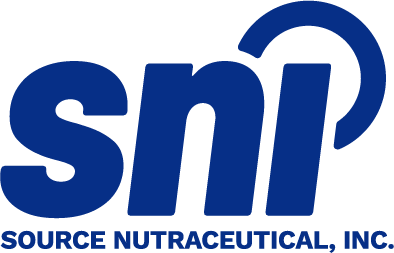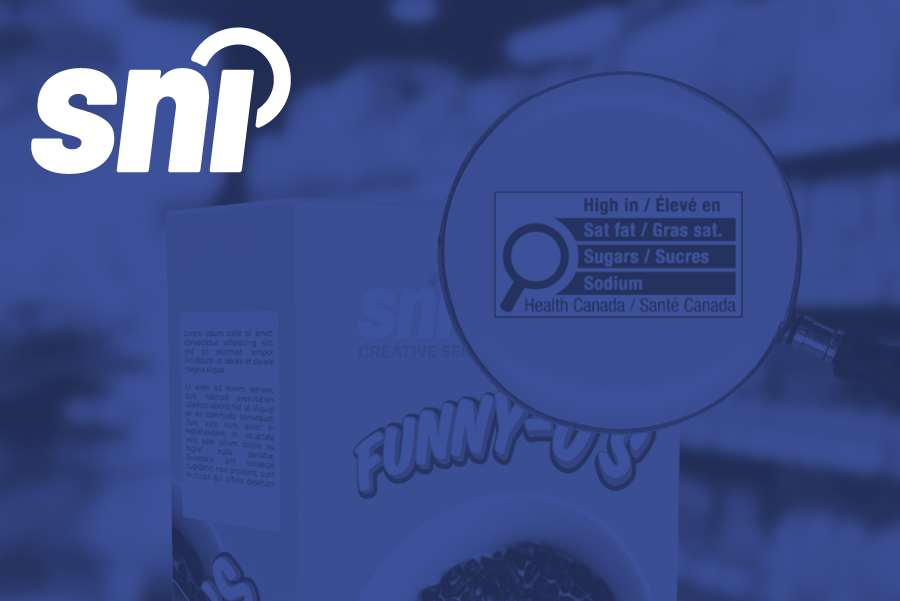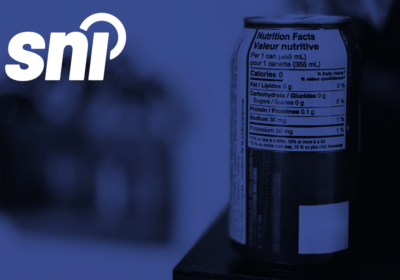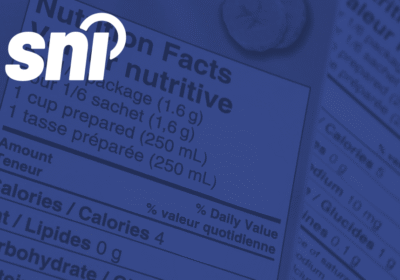Front-of-package (FOP) nutrition labelling is a major regulatory initiative introduced by Health Canada to support healthier food choices among Canadians. This labelling requirement mandates a standardized nutrition symbol on prepackaged foods that are high in saturated fat, sugars, or sodium, which are nutrients commonly linked to chronic illnesses such as heart disease, obesity, and type 2 diabetes. The FOP symbol is designed to provide consumers with immediate, accessible information about the health profile of a product, allowing for quick comparisons between similar items without needing to review the full Nutrition Facts table.
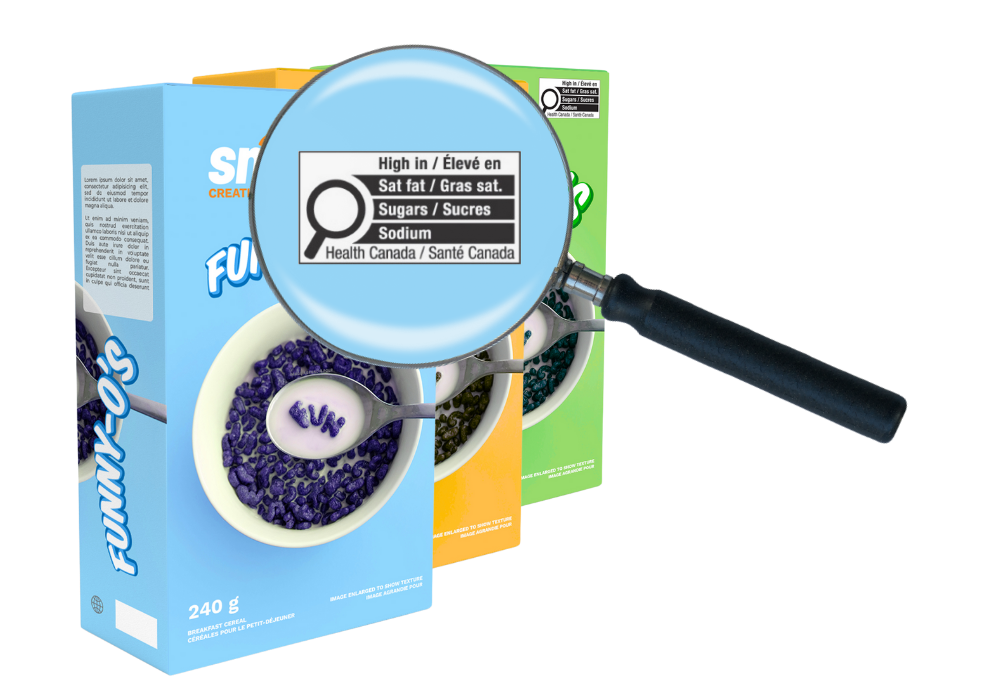
By offering a visual warning directly on the front of packaging, FOP labelling aims to reduce misleading marketing practices and empower consumers to make better-informed decisions at the point of purchase. It also reflects Canada’s commitment to addressing diet-related health issues and aligns with global efforts to improve food transparency. The following information outlines the purpose, design, application criteria, exemptions, and implications of FOP labelling, particularly its interaction with other health-related claims and label elements.
What is Front-of-Package (FOP) Labelling?
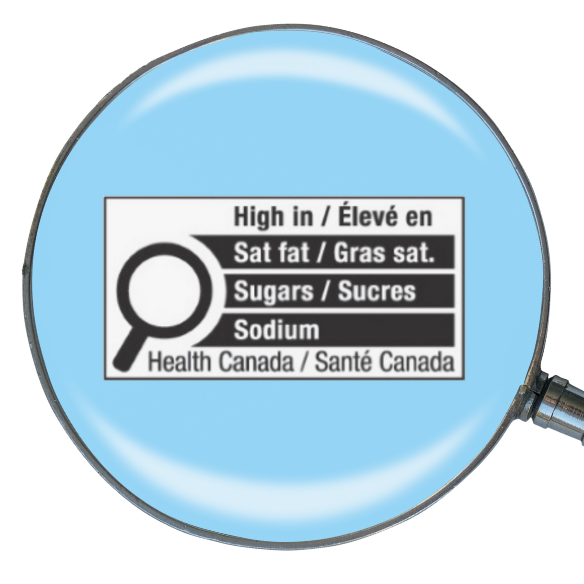
Front-of-package (FOP) labelling refers to the placement of a clear and standardized nutrition symbol on the front of prepackaged food products. In Canada, this symbol appears when a product is considered high in one or more of the following nutrients: saturated fat, sugars, or sodium. The primary objective is to help consumers quickly identify products that may pose health concerns, without having to examine the full Nutrition Facts table on the back or side of the package. The FOP symbol serves as a simple, visual cue that alerts consumers when a food exceeds specified thresholds for these nutrients of concern.
Why was FOP introduced?
The front-of-package (FOP) nutrition symbol was introduced as part of Health Canada’s broader effort to support healthier eating habits and reduce the burden of diet-related chronic disease. On July 20, 2022, Health Canada amended the Food and Drug Regulations (FDR) by publishing the Regulations Amending the Food and Drug Regulations (Nutrition Symbols, Other Labelling Provisions, Vitamin D and Hydrogenated Fats or Oils) in the Canada Gazette, Part II.
These amendments introduced a mandatory FOP nutrition symbol requirement for most prepackaged foods that are high in nutrients of public health concern, namely saturated fat, sugars, and/or sodium. The symbol must appear on the front of packages when products exceed set thresholds for any of these nutrients.

The goal behind implementing this symbol is to provide Canadians with quick, easy-to-understand nutrition information where it’s most visible: the front of the package. This approach is designed to help consumers make more informed choices at the point of purchase, particularly when it comes to limiting intake of nutrients linked to serious health issues such as heart disease, stroke, high blood pressure, and type 2 diabetes.
By highlighting foods high in saturated fat, sugars, or sodium, the FOP symbol plays a key role in Canada’s Healthy Eating Strategy, which aims to improve food environments, empower consumers, and ultimately reduce the risk of diet-related chronic conditions.
When is a FOP symbol needed? Thresholds and Criteria
Under Canadian regulations, the FOP symbol must appear if a food meets or exceeds the following nutrient thresholds per serving size:
- For most foods:
- 15% or more of the Daily Value (DV) for sodium, sugars, or saturated fat per reference amount and serving size.
- For prepackaged foods with small reference amounts (≤ 30 g or 30 mL):
- The threshold is reduced to 10% or more of the DV for each of the three nutrients.
- For main dishes and meals (like frozen entrees):
- The threshold increases to 30% or more of the DV.

What are the exemptions for FOP labelling?
The FOP nutrition symbol regulations aim to help consumers identify foods high in saturated fat, sugars, or sodium. However, many products are either fully or conditionally exempt from displaying these symbols.
Fully exempt products include items like shipping containers, small-display items, raw single-ingredient meats, and foods sold for immediate consumption or use in foodservice. These never require a FOP symbol, regardless of their nutrition profile.
Conditional exemptions depend on factors like ingredient composition, product format, and whether the product is exempt from carrying a Nutrition Facts table (NFt). Whole foods (like fresh produce, plain dairy, and minimally processed nuts or oils) may also qualify—provided they don’t contain disqualifying ingredients.
For a detailed breakdown of full exemptions, conditional exemptions tied to NFt status, nutrient-specific criteria, and calcium-related exemptions, check out our full Front-of-Package Exemptions Guide.
How should the FOP symbol appear on products?
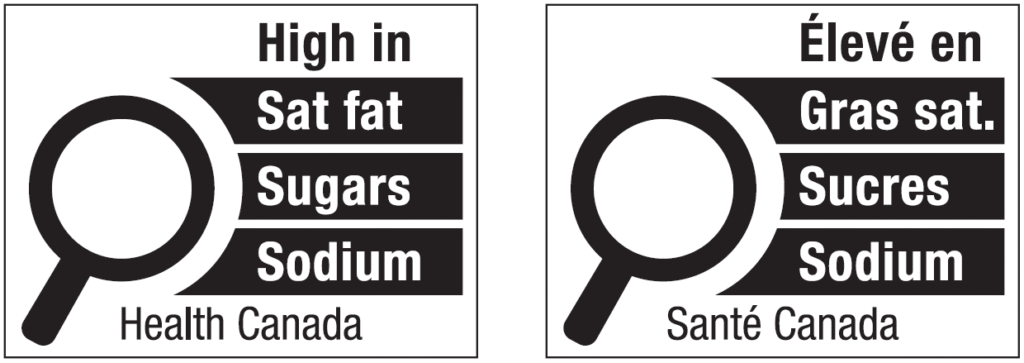
When a food product is high in saturated fat, sugars, or sodium (based on specific thresholds mentioned above) it’s required to carry a FOP nutrition symbol. But it’s not just about putting any symbol anywhere. The FDR outlines clear rules for where the symbol must appear on the label and exactly how it should look.
These rules help ensure that the FOP symbol is easy for consumers to spot and understand, no matter what kind of pre-packaged product it appears on.
What should the FOP symbol look like?
Health Canada has created 78 different FOP symbol formats to account for different nutrients, languages (English, French, or both), and packaging orientations (horizontal or vertical). The FOP symbol itself is standardized and should appear as prescribed based on the packaging size (specifically the principal display surface (PDS). Manufacturers and product designers should refer to the Compendium of nutrition symbol formats to determine which FOP symbol is most appropriate for their label size.
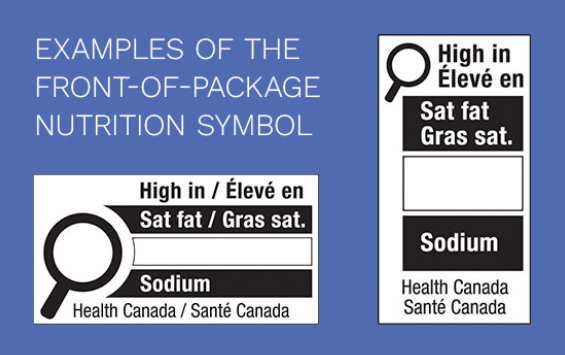
What are the key features of the FOP symbol?
To keep things consistent and easy to recognize, all FOP symbols must follow a specific design format. Here are the standardized features of all FOP symbols:
Black and white design: The symbol is printed in black and white inside a solid white rectangle with a thin black border.
Magnifying glass icon: A black magnifying glass sits on the left side of the box—it’s a visual cue for “take a closer look.”
Bold heading: The top of the box features the phrase “High in” in bold black letters.
Nutrient bars: One, two, or three bars appear inside the box, depending on which nutrients are above the threshold (e.g. “high in saturated fat,” “high in sugars,” “high in sodium”).
Health Canada attribution: At the bottom of the symbol, it says “Health Canada” to show the information is backed by government regulation.
Clean layout: The elements inside the symbol don’t touch each other, and there must be a clear buffer zone around the symbol on the package with no overlapping text or graphics.
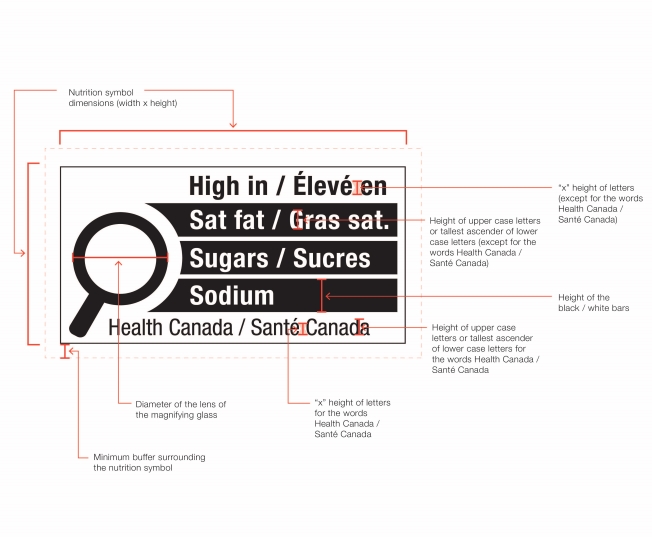
These requirements ensure the FOP symbol is consistently recognizable and easy to find across all types of food packaging. By standardizing the format, regardless of brand, product type, or package size, the symbol becomes a reliable tool that helps consumers quickly assess and compare products, supporting more informed food choices at a glance.
Where on the label should the FOP appear?
When it comes to the placement of the Front-of-Package (FOP) nutrition symbol, consistency is key. Health Canada has set out clear rules to make sure the symbol is easy to find and recognize, helping consumers make quick and informed food choices. Here’s a breakdown of where the symbol needs to go based on the type of package:
General Placement Rules: The FOP symbol must always appear on the Principal Display Panel (PDP), which is the main part of the label that’s most likely to be seen by consumers when the product is on the shelf. Its specific position on the PDP depends on the shape of the panel:
- If the panel is taller than it is wide: The symbol must go in the upper half of the PDP.
- If the panel is wider than it is tall: The symbol must appear in the right half of the PDP.
This approach ensures that the symbol consistently appears in a predictable area, making it easy to locate regardless of package size or shape.
Cylindrical Packages: For round packages like cans, the symbol should be positioned in the upper half or right half of the surface, with an added buffer zone. It must sit at least 10% of the panel’s width away from the left or right edge. If that’s not fully possible (due to space limits), the symbol can slightly cross into the other half—but only as much as needed.
Irregular Shapes: When dealing with odd-shaped labels, the “upper” or “right” half still applies, but these areas are defined by surface area, not by simple height or width measurements. For complex shapes, mathematical calculations help define these zones.
Products Displayed Differently at Sale: Sometimes products are displayed in ways that change which panel faces the consumer. In these cases, manufacturers and retailers share responsibility for ensuring the symbol appears on the panel actually visible to consumers during normal sale conditions.
Scale-Labelled Products: Products packaged and labelled in-store with scale labels (like deli meats or cheeses) can display the symbol either:
- Directly on the scale label, or
- Elsewhere on the visible surface, if necessary.
The key requirement is visibility. The symbol can’t be placed on the bottom of the container and must not obscure other mandatory information.
Ornamental & Decorative Containers: Ornamental containers (like collectible cookie tins) can show the symbol on a label at the bottom or on an attached tag, since their primary surface is decorative. Decorative containers (which aren’t reusable or ornamental) cannot place the symbol on the bottom. It must follow the general PDP placement rules.
The FOP nutrition symbol must be displayed where consumers can see it easily, which is most often in the upper or right half of the main label. The specific placement varies by package type, but the overarching goal remains the same: to keep the symbol visible, consistent, and effective in helping shoppers make healthier choices.
Health Statements & FOP Labelling Conditions
In the context of front-of-package nutrition labelling, a “health-related statement” refers to any statement, claim, or visual element on a food label that communicates information related to health. This includes the following:
- Quantitative nutrient declarations outside of the Nutrition Facts table. For example, a label might state “360 mg of calcium per bar (40 g)” on the front of the package.
- Nutrient function claims. These are statements about the role of a nutrient in maintaining or supporting normal bodily functions, such as “Protein helps build strong muscles.”
- Nutrient content claims. These describe the level of a nutrient in a food, for example, “Reduced in sugar.”
- Health claims. These are broader claims about the health benefits of certain foods or diets, such as “A healthy diet rich in a variety of vegetables and fruit may help reduce the risk of heart disease.”
- Other health-related logos, symbols, seals of approval, or marks. This includes visual representations like a check mark or certification mark from a third-party organization that may imply a product is a healthy choice.
While these types of claims are voluntary, they must still meet regulatory requirements. Specifically, they must comply with subsection 5(1) of the Food and Drugs Act, the relevant sections of the Food and Drug Regulations (FDR), and subsection 6(1) of the Safe Food for Canadians Act. In addition, they should follow any relevant guidance provided by Health Canada.
Can health-related representations appear on the principal display panel (PDP) when a food carries the FOP symbol?
Yes, health-related representations are generally permitted on the principal display panel (PDP) even when the product features a FOP nutrition symbol. However, there are several important considerations and restrictions that apply when the food is high in saturated fat, sugars, or sodium.

Claims that are unrelated to saturated fat, sugars, or sodium can be included without restriction. For example, claims about protein content, fibre, or energy are allowed. In addition, claims that reference saturated fat, sugars, or sodium are allowed only if the food is not classified as “high in” that specific nutrient.

In cases where a food is identified as high in one of these nutrients, only certain claims are allowed on the PDP. Specifically, the only claims that may appear are those that indicate the product is “reduced in” that particular nutrient. For example, if a food is high in saturated fat, a “reduced in saturated fatty acids” claim is permitted, but other claims related to saturated fat, such as “low in saturated fat,” are not.

Additionally, some claims are outright prohibited if the nutrient of concern is declared in the FOP symbol. For instance, if a food is high in sugars, the use of the term “unsweetened” on the PDP is not allowed. Similarly, if a food is high in sodium, the statement that the product is intended for a sodium-restricted diet is not permitted.

There are also distinctions made for certain meat and poultry claims. The terms “lean” and “extra lean” are considered to refer to total fat content and not saturated fat specifically. As a result, these claims are allowed even when the food carries a symbol indicating it is high in saturated fat.
What specific nutrient-related claims are allowed or prohibited when a food is labelled “high in” a nutrient?
If a food carries a FOP symbol that identifies it as high in saturated fat, only the claim “reduced in saturated fatty acids” may be displayed on the PDP. Other claims related to saturated fat, such as those that suggest it is low or free of this nutrient, are prohibited.

For foods high in sugars, the only permitted nutrient content claim on the PDP is “reduced in sugar.” All other sugar-related claims, such as “sugar-free” or “no added sugar,” are not allowed.
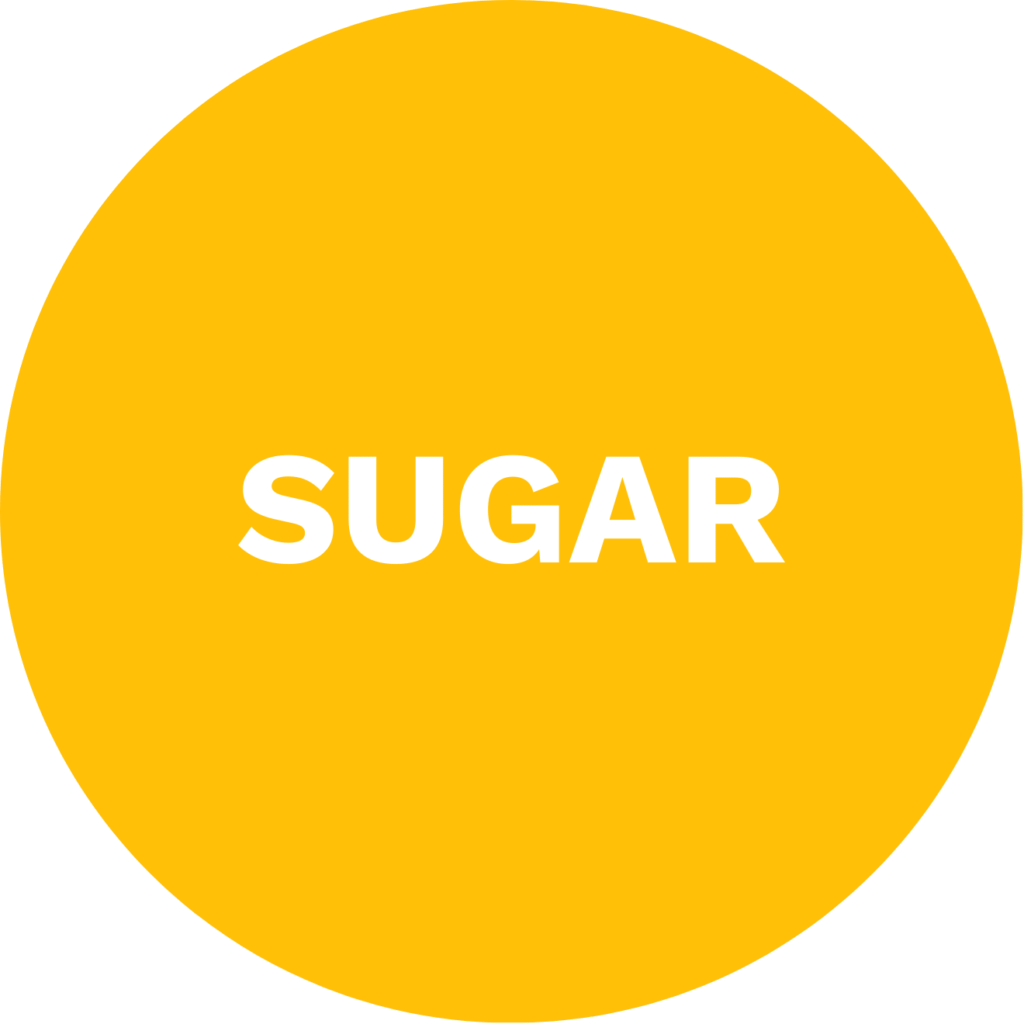
For foods high in sodium, the claim “reduced in sodium or salt” is the only one permitted. All other claims indicating a low or moderate level of sodium are prohibited on the PDP.
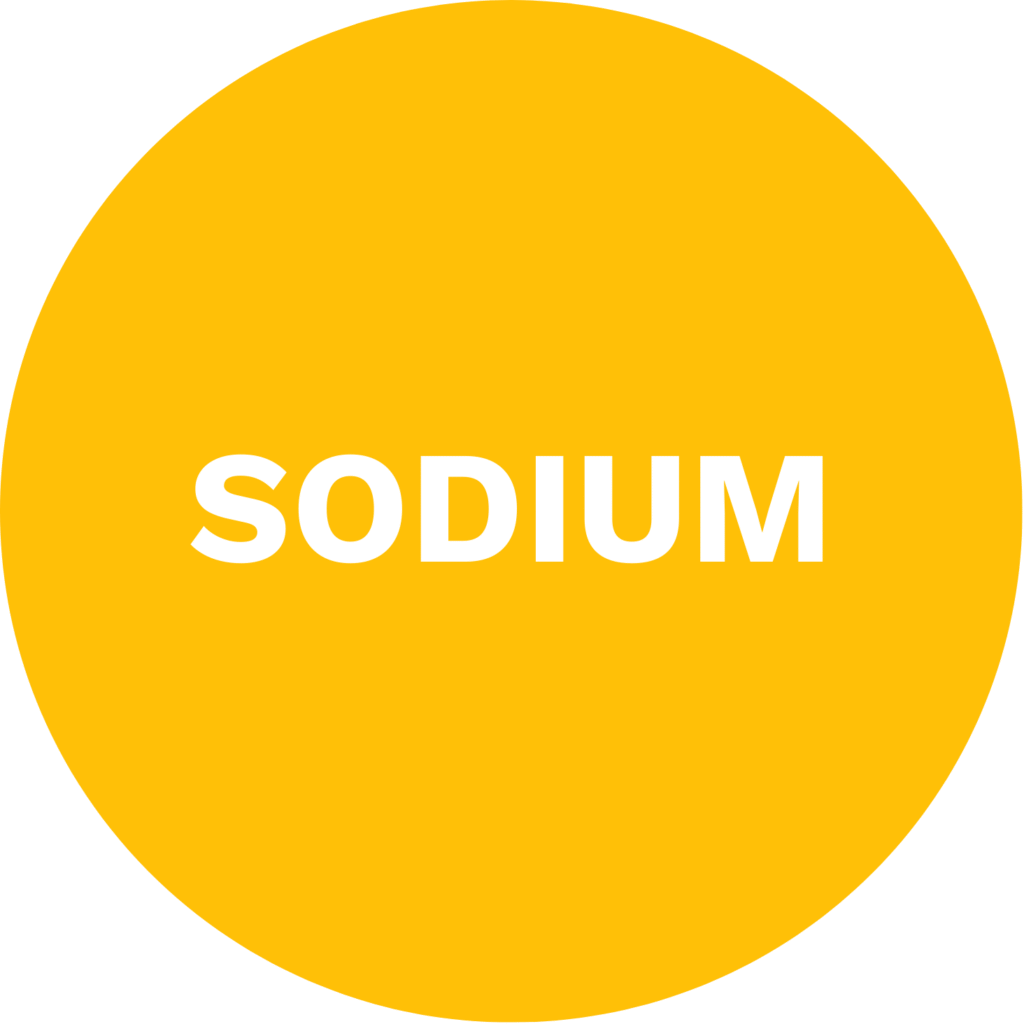
In all cases, it is also prohibited to use any words, phrases, illustrations, or symbols that could be mistaken for the official FOP symbol, regardless of whether the product actually displays the symbol.
Are there size restrictions on health-related representations when a FOP symbol is present?
Yes, there are restrictions on the size of health-related claims or statements that appear on the principal display panel alongside a FOP symbol. The allowed letter height depends on whether the nutrient featured in the claim is also identified in the FOP symbol.
- If the nutrient in the claim is also identified in the symbol, then the size of the letters in the claim must not be larger than the letters in the symbol. Specifically, the height of uppercase letters must not exceed the prescribed height of uppercase letters in the FOP symbol, and the tallest lowercase ascenders must also not exceed the height of the corresponding elements in the symbol.
- If the nutrient mentioned in the claim is not identified in the FOP symbol, then the claim can be displayed in letters up to twice the height of those in the symbol.
These size restrictions do not apply to brand names or product names that contain nutrient-related terms, such as “Fibre Crunch” or “Probiotic Yogurt.”
Health Canada provides specific measurements for the letter heights used in each symbol format in the Directory of Nutrition Symbol Specifications. Companies must refer to this directory to ensure compliance with these rules.
Do these restrictions apply to other parts of the label?
No, the restrictions on the size and type of health-related representations apply only to claims made on the principal display panel when the FOP symbol is present. These limitations do not apply to other areas of the package, such as the back panel. However, any claims made elsewhere on the package must still meet general requirements for legibility and truthfulness as set out in food labelling regulations.
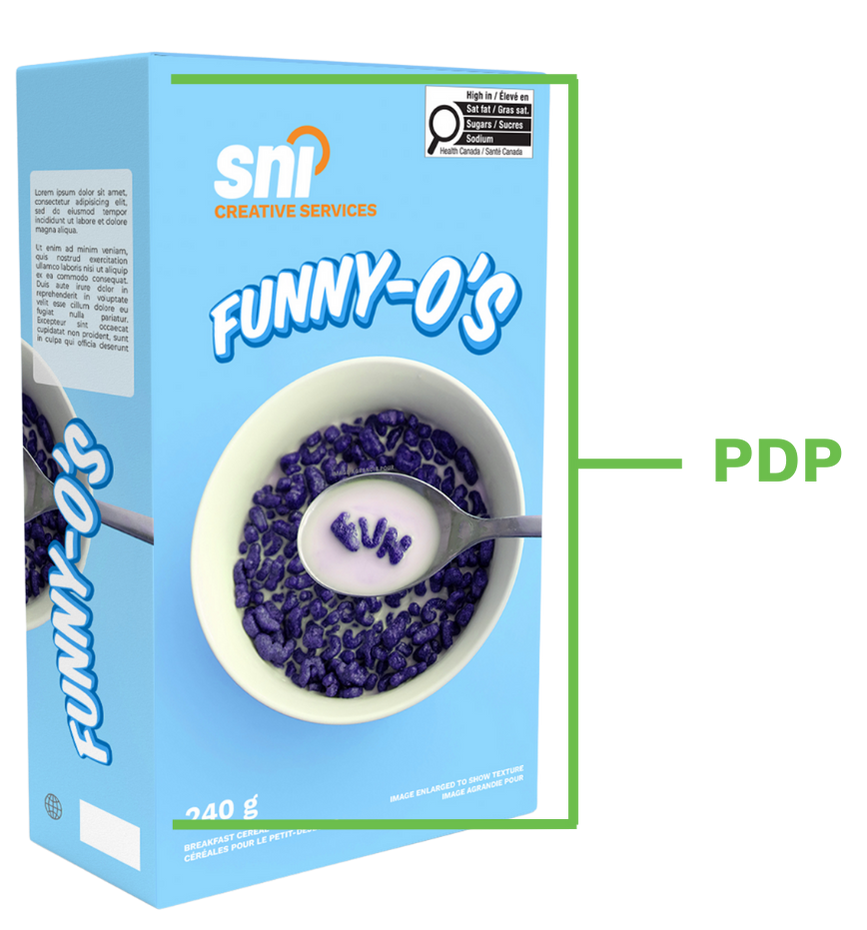
Final Remarks
Canada’s front-of-package nutrition labelling system represents a significant step forward in promoting public health through improved food labelling. By clearly flagging foods high in saturated fat, sugars, or sodium, the FOP symbol helps Canadians make healthier decisions at a glance. The regulations also place firm boundaries on how health-related claims can be used when the symbol is present, ensuring that messaging remains honest, consistent, and aligned with a product’s actual nutritional profile.
Together, the FOP requirements and related claim restrictions serve to reduce misleading marketing, enhance consumer understanding, and support the broader goal of reducing diet-related chronic disease across the country. For food manufacturers and marketers, compliance with these rules is not only a regulatory necessity but also an opportunity to align with consumer expectations for transparency and health-conscious choices.
Looking for regulatory support with FOP labelling?
Look no further! Our team is here to help. Reach out today to learn how our experts can save you time and prepare your products for compliance with FOP labelling.
FAQ
What is the Front-of-Package (FOP) nutrition symbol, and why is it required?
The FOP nutrition symbol is a standardized black-and-white icon featuring a magnifying glass, designed to alert consumers when a prepackaged food is high in saturated fat, sugars, and/or sodium. This initiative aims to assist Canadians in making healthier food choices by providing clear and accessible nutritional information at a glance.
Which foods are required to display the FOP nutrition symbol?
Prepackaged foods that meet or exceed specific thresholds for saturated fat, sugars, or sodium must display the FOP nutrition symbol. These thresholds are based on the percentage of the daily value (% DV) per reference amount or serving size, whichever is greater. For example, general prepackaged foods that meet or exceed 15% DV of these nutrients are required to display the symbol.
Are there any exemptions to the FOP labelling requirements?
Yes, certain foods are exempt from the FOP labelling requirements. Exemptions include:
- Foods with health protection benefits, such as fruits and vegetables without added saturated fat, sugars, or sodium.
- Certain dairy products like plain milk, yogurt, and cheese, which are important sources of calcium.
- Raw, single-ingredient whole cuts of meat, poultry, and fish that do not carry a Nutrition Facts table.
- Foods in very small packages or those intended solely for commercial or industrial use.
When do the FOP labelling requirements come into effect?
The FOP labelling regulations came into force on July 20, 2022. However, the food industry has been provided with a transition period until January 1, 2026, to comply with the new requirements. During this period, manufacturers are expected to update their packaging to include the FOP nutrition symbol where applicable.
How should the FOP nutrition symbol be displayed on packaging?
The FOP nutrition symbol must be prominently displayed on the principal display panel (PDP) of the food package. Its size should be proportionate to the package size to ensure visibility. The symbol must be presented in both English and French, either as a bilingual symbol or as two separate symbols, to accommodate Canada’s official languages.
